- Shaft flex. This is the big point, as you should likely be using a club with a senior flex shaft. Senior flex shafts are easier to bend than 'regular' or 'stiff' shafts, meaning you won't need as much club head speed to get the ball up in the air properly. It should be noted that not all senior players will be a good fit for senior shafts, so the best thing you can do is complete a club fitting at your local golf shop. A professional fitter will be able to tell you what kind of shaft is the best fit for your swing.
- Club head design. Generally speaking, most senior players are going to be better served with large, forgiving club head rather than small blades. This is a point that relates specifically to the set of irons that you choose to put in your bag. When you opt for irons that have a large club head and an ample sweet spot, you will not have to be as accurate (or as powerful) in order to produce good shots.
Golf is a great game for seniors. There are a number of reasons for the popularity of the game among the senior set, including the relatively low physical requirements, the opportunity to spend time outside, the social component, and much more. With plenty of free time available after retirement, many seniors find that they play more golf in their 60’s and 70’s than they ever did while they were still working. If you are already in your senior years, or if you are quickly closing in on retirement age, you can likely look forward to many great years of golf ahead.
In this article, we have collected some of the best senior golf tips available. Some of these tips relate to playing the game at a higher level, while others simply relate to having more fun on the links. Whether you are motivated by lower scores or just fresh air and exercise, golf offers something for everyone. Note – All of the content below is based on a right handed golfer. If you play left handed, please reverse the directions as needed. Let’s get on with the list!

One of the biggest mistakes made by senior golfers – specifically, male senior golfers – is playing tees that are too long for their capabilities. The problem? These players tend to see the forward tees as the ‘ladies’ tees’. Since they don’t want to play from the same tees as the women, usually because of ego, they stay back on the white or blue tees and struggle to make it around the course. This not only makes it harder to enjoy the game on a day to day basis, but it also can slow down the pace of play for everyone else.
The solution here is simple – play the tees that are right for your ability, regardless of what color those tees happen to be. If you hit your driver less than 200 yards, it is going to be very difficult to make it around a golf course that measures 6,000+ yards. Think about your distance capabilities realistically, and pick tees that will give you a fighting chance to play well. As a general rule of thumb, if you can’t reach the green in two on most of the par fours that you play, you are standing on tees that are too far back.
It is also important to note that you should be adjusting your tee selection to the conditions of the course around you. For instance, it might be perfectly reasonable to play the middle tees in the summer when the weather is warm and the turf is firm. However, during the colder months, you may need to move up to the forward tees to account for less roll in the fairways and colder temperatures.

This is a tip that is important for golfers of all ages, but it is something that is particularly important to senior players. Using clubs that have been designed specifically to meet the needs of senior golfers is a great idea, as those clubs are going to be easier to use effectively at lower swing speeds. We all lose swing speed as we age, so adapting to that change through the use of proper equipment is important if you wish to keep playing at your current level.
The two key elements of your equipment to consider when you are building a set to use in your senior years are as follows –
You don't have to buy the most expensive set of clubs on the market in order to play well, but you do need to use clubs that are properly suited to your abilities. Take some time to look into finding the right gear and you will be rewarded for years to come.
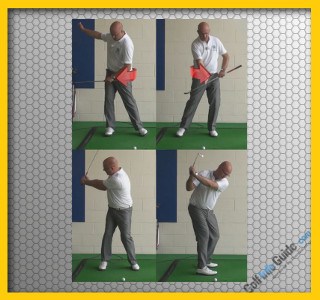
As you age, it is going to be more and more difficult to make a full turn away from the ball. It is only natural to lose a bit of flexibility as you get older, so there is no shame in noticing that your backswing is no longer as long as it once was. However, if you would like to reclaim a bit of that turn that you have lost, consider turning your right foot open in order to make it easier to rotate back. This little trick might not allow you to regain all of your lost distance, but it certainly can help you find some of those missing miles per hour.
When you make this adjustment, it is important to note that nothing else about your stance should change at all. It is easy to start moving other parts of your stance around when you turn your foot, but those other changes could lead to trouble. Do your best to keep everything else perfectly in place while simply turning that right root a little bit open to the target line. As long as everything else stays the same, you should be able to find extra power through this tip without losing any of your control.
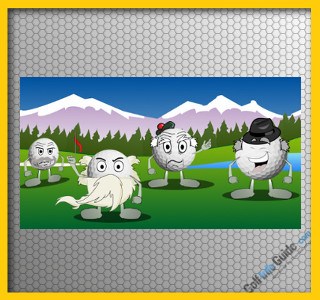
Unless you already have a large group of golfing buddies that you can call on for a regular game, you might want to join a local club in order to find friends that you can play with consistently. Assuming you are retired, you may find that you are able to play golf two or three times a week, if not more. When that is the case, you will need a long list of other golfers that you can turn to in order to find a game. Many golf courses (both public and private) have senior groups that are always open to welcoming new members.
Of course, you don't have to play with others in order to enjoy your time on the course, as there is nothing wrong with heading out as a single from time to time. However, you may grow bored with your rounds if you play solo a majority of the time, as the social side of the game is one of the things that so many seniors love. Now that you don't have the chance to interact with people at work, the social time you have at the golf course may be one of your only opportunities to chat with others who share a common interest.

#5 – Sharpen Up Your Short Game
It is a simple fact of life that you are going to lose some of your strength and flexibility as you age. While that might affect your ability to hit high and long golf shots, there is no reason that your short game needs to decline at the same time. If you are willing to spend some time practicing on and around the greens, you can keep posting quality scores by hitting great chips and making plenty of putts.
While it would be a good idea to work on all areas of the short game, there are two areas specifically that need plenty of attention – short putts, and medium-length pitch shots. With regard to short putts, you simply have to make as many of these as you can because there is no way to recover lost shots in this area. You may not have the same margin for error that you once had when you could hit the ball longer distances, so it is essential that you cash in on your putts from the three to five-foot range.
With medium-length pitch shots, you need to be sharp in this area because you may be left with a lot of these kinds of shots on long par fours. If you hit two good shots on a par four – but you don’t have quite enough stick to reach the putting surface – you may find your ball in the range of 20 or 30 yards from the cup. Having the ability to pitch the ball close from this spot will help you to save as many pars as possible throughout the day.
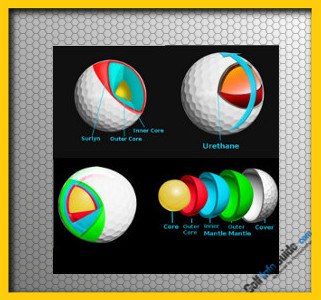
#6 – Pay Attention to the Ball
We discussed earlier the importance of having the right clubs in your bag, but that is not where the conversation ends when it comes to equipment. You also need to have the right ball on the tee when you start each round. Golf balls that are meant for senior players are easier to compress than 'regular' golf balls, meaning they require lower swing speed to use properly. When shopping for golf balls at your local shop, pay attention to those that are marketed specifically to senior golfers.
Of course, in addition to the way a golf ball behaves on your full swing, it is also important to note how it works in your short game. Even if a ball is right for the swing of a senior player, it might not necessarily work for your short game needs. Try purchasing small quantities of a few different senior golf balls (sleeves of three, for instance), and test them all out in the short game as well as the long game. The gains that can be experienced when you use the right ball are quite impressive, so don't overlook this important piece of the puzzle.
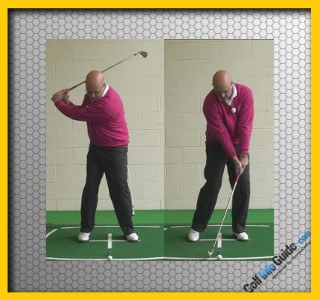
This is a tip that is focused on allowing you to play golf for as long as possible into the future. When playing iron shots, do your best to pick the ball off of the top of the turf rather than digging down in while taking a large divot. Why is this important for senior golfers? Simple – digging your irons into the turf time after time is going to take a toll on your hands and wrists. The impact that occurs when you hit down aggressively into the turf is hard on your joints, and that wear and tear could soon keep you off the golf course entirely.
While this point is important to understand for anyone who plays golf in their later years, it is especially key for those who suffer from arthritis. If your joints are already compromised in some way, the last thing you want to do is aggravate them further. To pick the ball off the turf cleanly as often as possible, focus on the balance of your swing while playing the ball from slightly forward in your stance. Moving the ball back is going to demand that you hit down into the turf, so be sure to keep the ball at least slightly forward of center.
If you don’t currently have any issues with arthritis or any other pains in your hands and wrists, you may be able to keep hitting down on your short clubs for the near future. Since you don’t swing your short clubs as fast as your long irons, the impact is not as severe when the club meets the turf. Go ahead and hit down on your irons when swinging short clubs to put plenty of spin on the ball (as long as you are healthy at this point). However, if you start to notice wear and tear taking its toll on your joints, change this plan as soon as possible to keep yourself healthy and on the course.
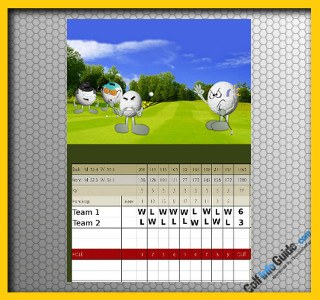
#8 – Play in Some Competitions
Just because you are now into your senior years, you don’t need to pack away your competitive streak when on the course. Almost every golf club has competitions available for players of all ages, so put yourself in the mix and have fun competing against others in your age bracket. You don’t have to be a super-serious golfer in order to enjoy a competition, either. Look at it as a chance to test your game under a bit of pressure while having fun with some of your friends at the club.
Even better than individual competitions are the team competitions that you will find at most clubs. Getting to pair up with a friend to form a team entry into a tournament at your course should be fun for all involved, and it will put your friendship to the test as you hit a variety of good and not-so-good shots throughout the day. There are things you will experience during team golf that simply don’t come up during individual play, so make sure to add this kind of tournament to your to-do list.
Having the opportunity to play in a few tournaments is why it is important to keep your handicap up to date at your home course. When you have an active and accurate handicap, you will be able to enter tournaments knowing that your true skill level has been represented. The handicap system is great for leveling out tournaments among players of all different skill levels, but only you can make sure that your handicap is current and legitimate.

It gets harder and harder to get the ball up into the air as you lose swing speed, but that doesn’t mean you can’t hit the ball close to the hole on a regular basis. To set yourself up for plenty of birdie and par chances, you will want to master the ground game with your irons. What does that mean? Rather than looking to the air in order to cover the distance between your ball and the hole, you will think about playing the shot along the turf. A shot that only flies a short distance before landing and running up to the green can be highly effective in the right situation, and it is often easier for a senior than trying to launch the ball high into the sky.
Of course, it is important to understand that the ground game is only going to work under certain conditions. Generally, you are going to need the course to be dry and firm if you are going to run the ball up toward the cup with any level of success. If you are playing on a wet and soft golf course, your low shots are simply going to dig in and come to a stop long before they arrive at the green. Not only will this depend on the kinds of courses you play, but it will also depend on the time of year you are playing. During the summer, the ground game is usually highly effective, while it can be totally useless in the winter months.
To play shots low to the ground, take approximately two or three extra clubs for a given approach shot. For instance, if you are at a distance that would usually call for an eight iron, take a six iron from your bag and bump the ball along the ground nicely. You can play these kinds of shots back in your stance since you aren’t making a swing at full speed. It will take some time to develop your touch and feel for these kinds of shots, but you should get the hang of it sooner rather than later.

Most of all, you should be having fun as a senior golfer. You have certainly worked hard throughout your life to earn your retirement, and spending on the golf course is a great way to go. Unfortunately, many golfers take the game too seriously to actually have any fun at the end of the day. Too worried about posting a good score, impressing others, or doing who knows what else, countless players head to the parking lot without actually having enjoyed themselves to the fullest. And that is a shame. If you do nothing else as a senior golfer, make it a goal to have as much fun as possible during each and every round.
Make no mistake – you can still have fun while trying to play good golf. Focusing on fun doesn’t mean you have to give up on the idea of shooting low scores, as you can do both at the same time. By all means, feel free to practice and work toward any goals that you may have set for yourself. However, when it comes down to it, you need to make sure that fun is prioritized above all else. When that is the case, you will find your golf experiences to be rewarding, and you may find that you play better as well.
Golf is a great way for seniors to spend their free time. The benefits of the exercise and fresh air that come along with playing golf are well known, and it is one of the best social activities available for the retired set. If you are a senior or you will be in the near future, use the pieces of advice listed above to get the most from your game going forward. With any luck, you will be able to enjoy many great rounds of golf for years and years to come. Thank you for taking the time to read, and have fun out there!






